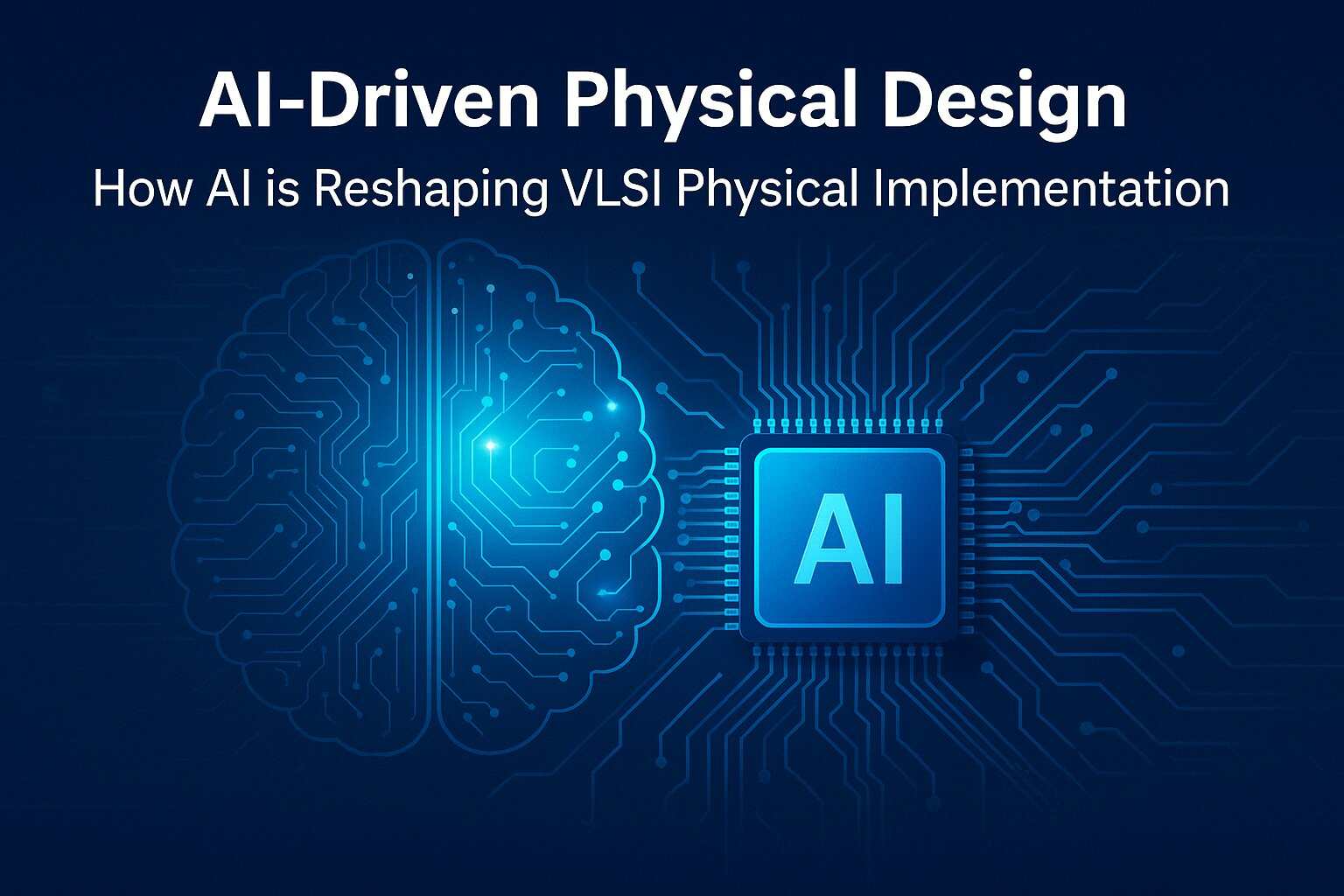AI-Driven Physical Design: How AI is Reshaping VLSI Physical Implementation
Introduction
The semiconductor industry is undergoing a transformative shift. Artificial Intelligence (AI) is playing a pivotal role in redefining VLSI Physical Design methodologies. With the scale and complexity of designs escalating, AI is proving to be a game-changer in addressing timing closure, optimizing power consumption, and improving placement strategies. This article explores how AI is fundamentally altering the physical design landscape and what engineers need to know to stay relevant.
Understanding AI in Physical Design
AI-driven physical design incorporates machine learning (ML) into traditional EDA (Electronic Design Automation) tools. These AI-enhanced tools optimize critical phases like floorplanning, placement, and routing by analyzing historical design data and predicting optimal solutions for Power, Performance, and Area (PPA). Traditional approaches heavily relied on human expertise and iterative tuning, but AI leverages big data and predictive algorithms to deliver smarter results faster.
AI algorithms are now capable of analyzing previous design outcomes to suggest the best paths forward, reducing the need for multiple manual iterations. The incorporation of reinforcement learning allows these tools to adapt and improve based on outcomes, refining future predictions.
Key Benefits of AI-Driven Physical Design
1. Enhanced PPA Closure
AI tools predict congestion and timing hotspots early in the design flow, allowing engineers to take proactive measures. This leads to better timing closure and optimizes the design for power and area.
2. Reduced Iteration Cycles
AI shortens the feedback loop by offering intelligent recommendations, minimizing the number of trial-and-error cycles and freeing engineers to focus on higher-level challenges.
3. Efficient Resource Utilization
AI optimizes computational resources during the place-and-route phase, resulting in faster runtimes and reduced engineering costs.
4. Adaptive Learning
With every design cycle, AI tools become more accurate. Their learning algorithms adjust strategies based on prior outcomes, improving both efficiency and results over time.
Real-World Applications
Leading companies like Nvidia, AMD, and Intel are already integrating AI into their physical design flows. Tools such as Cadence’s Cerebrus and Synopsys’ DSO.ai have become benchmarks, demonstrating how AI can slash design cycles and costs while enhancing chip performance. These AI tools analyze millions of permutations to identify optimal solutions, often uncovering efficiencies that human designers might overlook.
Challenges to Consider
While the potential is enormous, AI integration comes with challenges:
- Interpretability: AI’s decision-making process can be opaque, making it difficult for engineers to understand how conclusions were reached.
- Data Dependency: AI models require vast, clean datasets to function optimally, which may not always be readily available.
- Workflow Integration: Adopting AI solutions necessitates rethinking existing workflows and retraining teams, which can be resource-intensive.
The Future of AI in Physical Design
Looking ahead, AI’s role in VLSI design will only grow. Future systems may achieve end-to-end automation from RTL to GDSII, transforming the role of design engineers into more strategic and oversight positions. The focus will shift towards architectural innovation, leaving optimisation tasks to AI.
Preparing for the AI Revolution
To remain competitive, engineers should:
- Master AI/ML concepts and programming languages like Python.
- Understand data analytics and its application within physical design.
- Stay updated on EDA tools integrating AI, such as Innovus and ICC2.
- Attend industry seminars and participate in AI-focused VLSI communities.
AI is not a replacement for human expertise but a powerful augmentation. Engineers who adapt will find themselves in high demand as the industry evolves.



